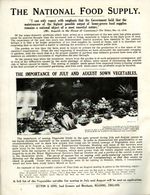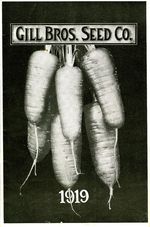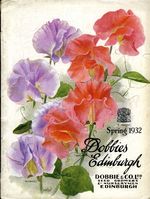
Sutton's Amateur's Guide in Horticulture and General Garden Seed Catalogue for 1917. (Click for more images)

Sutton's Amateur's Guide in Horticulture and General Garden Seed Catalogue for 1921. (Click for more images)
The First World War temporarily cut off exports from Europe to the United States, greatly stimulating American agricultural and horticultural production. While good stock seed was often difficult to obtain, American growers worked hard to maintain high quality standards. Flower seed production also increased during the war to include more species in addition to sweet peas, particularly in California.1 Many patriotic Americans grew vegetables in “War Gardens” to participate in the war effort.
Oregon’s Gill Bros. catalogue of 1919 said that although seed was hard to get in 1918, the firm could supply more varieties than other companies could because it grew much of its own stock. Their catalogue shows that U.S. breeders were beginning to develop varieties suited to particular regions, with resistance to specific diseases--for example, their Underwood’s Blight Resistant Squash. As former market gardeners, Gill Bros. produced important commercial varieties, some of which are still available. They also specialized in dahlias.
In England, the Sutton’s Seeds catalogue of 1917 discussed the value of vegetable gardens to the war economy and stressed the importance of high-quality seeds and succession sowing to maximize food production. Sutton’s continued to supply an enviable selection of flowers, such as the sweet peas and annual poppies, which heirloom flower gardeners of today would crave. Their catalogue also shows a photograph of Sutton’s petunias planted in front of the Taj Mahal1
After the war, several British companies catalogues printed a seal attesting to their participation in the King’s scheme for employing disabled veterans. One of these was Sutton’s catalogue of 1921. The seal appears in many catalogues up to the Second World War. As late as 1932, the Dobbie’s catalogue sold what were by then well known as Flanders poppies to raise funds for the Lady Haig Fund to help disabled soldiers.


